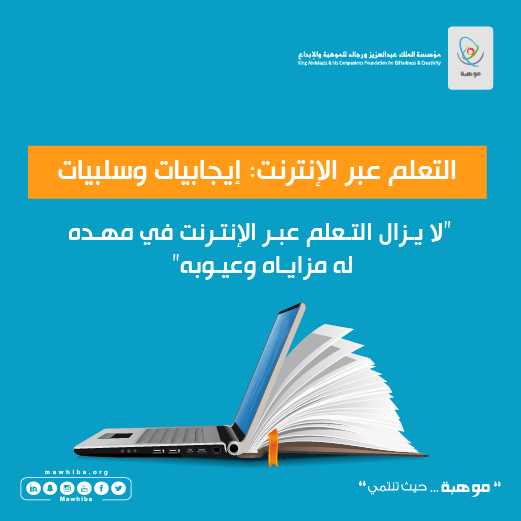Online Learning: Pros and Cons

Prof. Dr. Afraa Al-Shaiban
Talent
11
In the age of visuals, COVID-19, the Internet, and advanced technology, online education has become an essential source of learning. Many people are turning to the Internet to develop themselves, whether it is virtual courses, seminars, a college degree, a graduate degree, or general education classes. However, unlike traditional education that has been around for centuries, online learning is still in its infancy, with its pros and cons. Here are some points that highlight the pros and cons of digital learning:
Positives:
1. Easier to access: Students and teachers can be reached anytime, anywhere.
2. Less expensive: When classes are online, there is no need to spend money on lecture halls or classrooms, electricity, transportation, and childcare for student mothers.
3. Textbooks are not required, as most of the educational materials can be accessed online.
4. Online learning is not limited to children and youth, anyone of any age can enroll in courses.
5. Parents can easily participate and discuss their children's progress.
6. Flexibility, especially in terms of time and courses offered.
7. Accommodating measures: Students are more likely to feel comfortable in their own learning environment (their home) than in a strict classroom environment.
8. Social Networking: Online learning allows you to interact with interesting people, sometimes from far away places.
9. Online study helps students become active learners.
10. E-learning targets groups and individuals.
11. Unlike traditional education, which limits student numbers to the size of the classroom, online education is not limited by space or number.
Negatives:
1. Technology has its drawbacks: it is not always reliable and the connection can be cut off at any moment without warning!
2. Relying solely on virtual communication can lead to social isolation and depression.
3. The online learning environment should be enjoyable; free from external distractions such as televisions, loud noises or family members arguing. If learning and teaching is not an enjoyable experience, it will undoubtedly become a burden.
4. Too many educational platforms (Blackboard, Zoom, Microsoft Outlook, Microsoft Teams, etc.) lead to confusion, chaos, and conflicts of interest.
5. Limited student engagement: Not being physically present in class can cause students to lose interest in the lesson, which may lead some to mute the program and do something more fun.
6. It is difficult to stimulate discussions without physical interaction, which leads to poor development of communication skills among students.
7. Traditional classrooms are more intimate and student-friendly.
8. Ease of academic plagiarism (cheating) due to lack of supervision.
9. Mechanism and distance learning online.
10. Difficulty in starting discussions or class circles between students and the teacher.
Overall, both digital education and traditional classroom education are a great platform for learners so, the best solution is blended learning, where students can benefit from both worlds.
Did you benefit from the information provided on this page?
visitors liked this page
